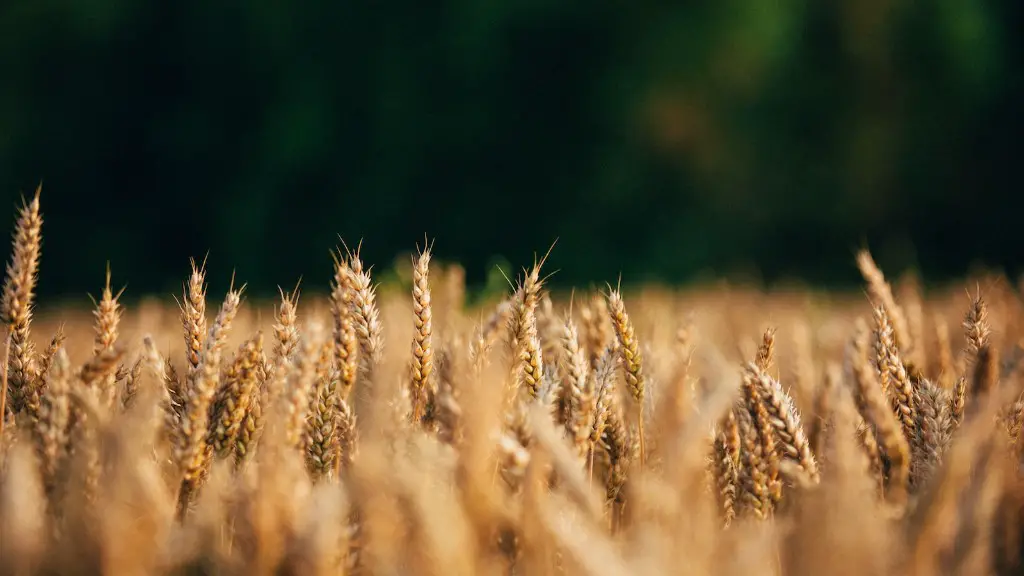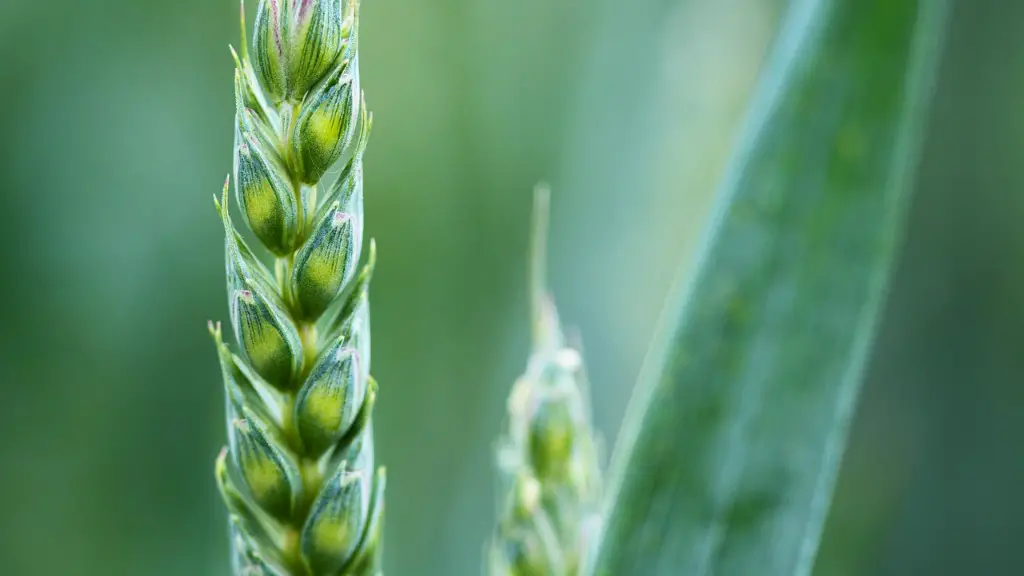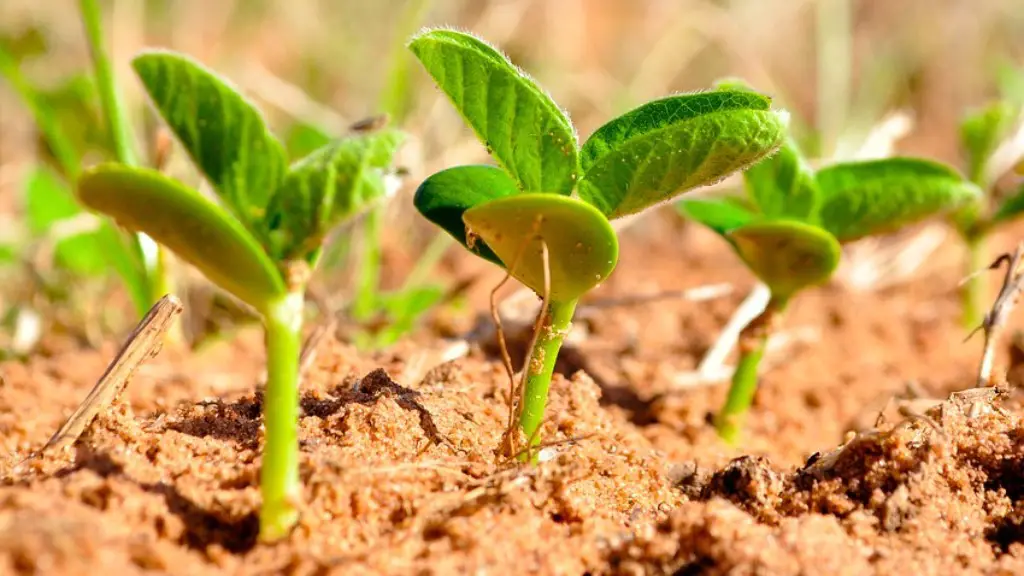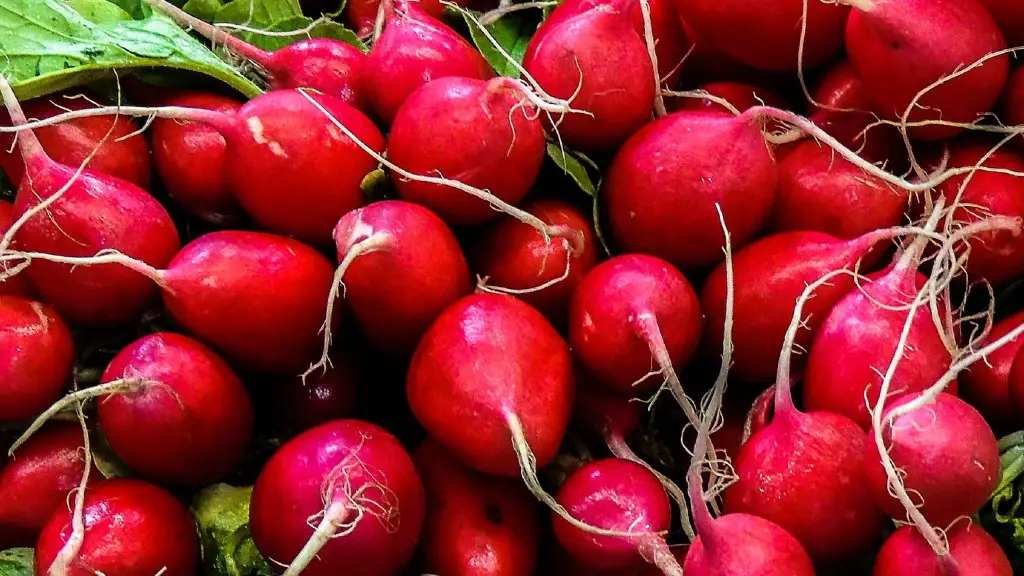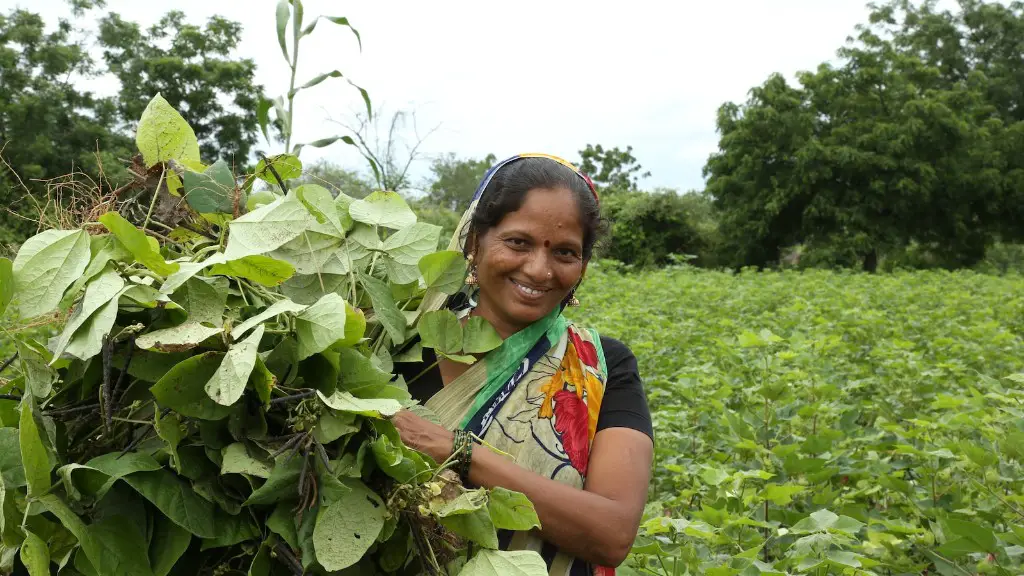Greenhouse agriculture is a form of agricultural production designed to maximize crop yields by artificially regulating the climate within a farm or plant-growing facility. The climate-controlled environment of a greenhouse enables producers to adjust temperature, humidity, lighting, and other elements to optimize growing conditions for specific plants. As a result, greenhouse agriculture can enable farmers and producers to extend the growing season year-round, maximize efficiency, and increase crop yields.
There are several general approaches to greenhouse agriculture. Many greenhouses use techniques like shade cloths and air movement systems to moderate temperatures, while others rely on automatically triggered window devices to increase ventilation. In some greenhouses, plants may be grown in pots or troughs located in the ground; this method is known as hydroponics and is sometimes used to grow crops in harsh conditions. Additionally, greenhouses are commonly used for the cultivation of seedlings or cuttings; this technique is advantageous for species that require a warm, sunny environment to reach maturity.
Greenhouse agriculture also offers a degree of pest control. The controlled environment of a greenhouse prevents the entry of certain insects and other animals that could potentially damage crops. Additionally, greenhouses can limit the spread of diseases. Finally, the even climate of a greenhouse allows producers to use more efficient irrigation and fertilization systems, which can further increase yields.
The use of greenhouses in agricultural production is not new, but has gained renewed attention in recent years as advancements in technology and design have enabled producers to more efficiently and economically regulate and control the internal climates of their greenhouses. Even so, there are still numerous challenges associated with greenhouse agriculture, particularly in terms of controlling temperature, humidity, and light intensity to create optimal growing conditions.
Greenhouse agriculture is widely seen as a sustainable solution to food insecurity, as it can improve yields and produce year-round. It is also viewed by many as a significantly more efficient option for agricultural production than traditional field-based methods. The technology and knowledge associated with greenhouse agriculture are constantly improving and evolving, indicating a bright future for this form of agricultural production.
Other Benefits of Greenhouse Agriculture
Greenhouse agriculture can also provide environmental benefits. For example, the energy required to heat and cool a greenhouse agricultural system is significantly less than that of a conventional farm or field-based system. Properly managing these systems can reduce energy costs and minimize the production of greenhouse gases. Additionally, greenhouses use significantly less water than standard field-based systems, which can be advantageous in areas where water is scarce.
The use of greenhouses can also benefit biodiversity and wildlife. Greenhouses often provide habitat for pollinators, such as bees and butterflies, which are essential elements in the pollination of many crops. Additionally, greenhouses allow farmers to raise a wide variety of different plants in close proximity, promoting the health of local ecosystems.
In addition to these environmental benefits, greenhouses enable commercial farmers and home gardeners alike to produce large quantities of crops without relying on traditional field-based systems. By using greenhouses, producers can reduce the reliance on chemical fertilizers and pesticides, as well as other unsustainable practices.
Greenhouse agricultural systems are also becoming increasingly popular for their ability to provide safe and controlled environments for farmers or producers to experiment with growing new varieties or species of plants that are not usually found in traditional farming or gardening environments. In addition, greenhouses provide flexible spaces for growing crops in resource-limited areas or even small backyards.
Various Types of Greenhouses
Greenhouses come in many shapes and sizes, ranging from large outdoor structures to simple plastic panels. The type of structure used is typically determined by the type of crop being grown and the space available. For example, commercial farmers may opt for larger plastic covered greenhouses that can be easily managed and manipulated, while home gardeners may choose simpler models with light plastic sheets. Additionally, greenhouses may be purpose-built or constructed from existing materials.
Greenhouses also use various materials and methods in their construction. Common materials used include polycarbonate plastic, as well as glass and other types of plastic. Some greenhouses may use multiple layers of these materials, as well as fans and vents, to regulate the internal climate. In addition, some greenhouses may use shade cloths to protect the plants from excessive sunlight.
Greenhouses may be designed to be open-air or enclosed, depending on the needs of the grower. Open-air greenhouses generally feature a simple frame, covered with translucent materials designed to allow light and heat to pass through, while enclosed greenhouses allow for greater climate control. In addition, many greenhouses include retractable covers or sides to allow for ventilation and the passage of pollinators and other beneficial insects.
Overall, greenhouse agriculture offers numerous benefits that make it an attractive option for commercial farmers and home gardeners alike. From extended growing seasons and increased yields to reduced reliance on chemical fertilizers and pesticides, the use of greenhouses in agricultural production can have a positive environmental impact, as well as provide reliable food production all year round.
Advantages of Automated Greenhouses
Automated greenhouses are far more sophisticated than their traditional counterparts. By using advanced technology, such as sensors and internet-connected devices, producers can carefully control the climate in the greenhouse. This, in turn, helps to optimize growing conditions and yields, while reducing the need to manually adjust settings.
Additionally, automated greenhouses can be set to perform specific tasks, such as irrigation and ventilation. This type of “smart” agricultural technology can reduce the labor required, while also increasing efficiency and accuracy. Automated greenhouses may even be programmed to respond to the presence of pests, thereby eliminating the need to manually check for them.
Automation further enables producers to take advantage of precision agriculture, or the ability to monitor, measure, and respond to crop health and environmental inputs in near-real-time. Automated greenhouses can also be utilized to measure and respond to environmental factors such as light, temperature, and humidity, making them particularly well-suited for growing high-value and sensitive crops.
The integration of digital technologies with greenhouses has further enhanced their capabilities, allowing producers to more accurately and efficiently monitor and control the environmental conditions within their greenhouses. Furthermore, advancements in automation technology have allowed producers to connect their greenhouses with smart home devices and other internet-connected devices.
The use of automated greenhouses opens a world of possibilities for agricultural production, as they are capable of producing higher yields in less time and with less effort. By controlling the climate within the greenhouse, producers can improve crop performance and yields while reducing their need for manual labor, ultimately increasing the profitability of their operations.
Greenhouse Agriculture and the Future of Food Security
With the advancements in technology and design, greenhouse agriculture has become increasingly more efficient and affordable. This has enabled more producers, both large and small, to utilize this type of agricultural production to reduce their reliance on traditional methods and improve their yields and profit margins.
However, the use of greenhouses for agricultural production is not without its challenges. Producers must carefully control the climate in their greenhouses to ensure optimal conditions for their chosen crops, and maintaining these settings can be time consuming and costly. In addition, automated greenhouses typically carry a higher price tag than those without automation.
Despite these challenges, the use of greenhouses in agricultural production has the potential to improve food security and reduce malnutrition worldwide. Additionally, the increasing prevalence of automated greenhouses has the potential to significantly reduce water and energy consumption, while also reducing the production of greenhouse gases. This concept is likely to be further explored and developed in the near future as global efforts to combat climate change and global hunger intensify.
In conclusion, greenhouse agriculture is a form of agricultural production that is capable of significantly increasing yields and improving food security. The use of greenhouses demonstrates numerous benefits, from extended growing seasons and increased yields to reduced reliance on chemical fertilizers and pesticides. Furthermore, advancements in technology and design have enabled producers to integrate automated systems into their greenhouses, enabling them to more efficiently and effectively monitor and control their crop production. In the future, the increasing prevalence of greenhouses in agricultural production stands to have a positive effect on global food security and the fight against climate change.
